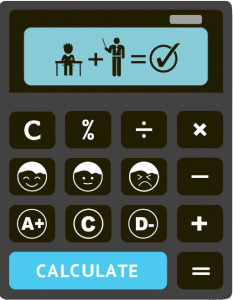Overview
As you already know, a function takes an input, applies a rule, and gives an output. There are different types of functions, such as trigonometric functions, rational functions, exponential functions, and so on. One such type is a polynomial function. Let’s see what they are all about.
Learning Outcomes
The purpose of this lesson is to
- Familiarize yourself with the structure of a polynomial function.
- You will also learn how to sketch polynomial functions.
What is a Polynomial Function?
The function \(P(x)=a_{n}x^n+a_{n-1}x^{n-1}+a_{n-2}x^{n-2}+….+a_{3}x^3+a_{2}x^2+a_{1}x+a_{0}\) is a polynomial function if the constants \(a_{0}, a_{1}, a_{2}, …. a_{n}\) are real numbers and \(n\) is a whole number (0, 1, 2, 3, …).
Here are some examples:
\(P(x)=2x^3-5x^2+3x+1\)
\(H(x)=\frac{1}{5}x^5-x\)
\(G(x)=-0.3x^3+1.5x^2-0.08\)
The function \(f(x)=x^2+3\sqrt{x}\) is not a polynomial function because \(\sqrt{x} = x^{1/2}\) and \(\frac{1}{2}\) is not a whole number.
Note:
- A quadratic function (\(ax^{2}+bx+c\)) is also a polynomial function.
- A polynomial function can show up in its factored form. Consider the function \(f(x)=(x+1)(x+2)(x-3)\). When you multiply the brackets out, you get \(f(x)=x^{3}-7x-6\), which is a polynomial function.
Sketching Polynomial Functions
Before we understand how to sketch a polynomial function, we must understand a few concepts.
- When a polynomial function is written in factored form, we can identify its zeroes or x-intercepts using the zero product property.
For example, the x-intercepts of \(f(x)=x(x+1)(x-2)\) are x = 0, -1 and 2. - The multiplicity of a factor is its power or exponent.
For example, the multiplicity of \((x+1)\) = 1 and that of \((x-2)\) = 2 in the function \(f(x)=(x+1)(x-2)^{2}\). - The degree of a polynomial function is the highest power of x in it.
The degree of \(f(x)=x^{5}-x^{4}+3x+2\) is 5. - The leading coefficient of a polynomial is the coefficient of the highest power of x in it.
The leading coefficient of \(f(x)=-2x^{4}+5x^{3}+x^{2}-3x+2\) is -2.
Steps
Step 1:
Identify the x and y intercepts. To identify the x-intercepts, apply the zero product property on the factored form of the polynomial. To find the y-intercept, substitute x = 0 in the function.
Consider the polynomial function given by \(P(x)=-x(x-2)(x-1)^{2}\)
The x-intercepts are 0, 1 and 2. If we plug in x = 0 in the function above, we get the y-intercept as 0.
Step 2:
Identify the multiplicity of each factor. If the multiplicity is odd, the graph crosses the x-axis. If the multiplicity is even, the graph touches (but doesn’t cross) the x-axis. Therefore, for the function given above, the graph will cross the x-axis at x = 0 and 2, but will touch it at x = 1.
Step 3:
The end behaviour of the function is determined from the table below.
| The leading coefficient is positive | The leading coefficient is negative | |
|---|---|---|
| Degree is odd | The function falls left and rises right | The function rises left and falls right |
| Degree is even | The function rises left and rises right | The function falls left and falls right |
Need more help with Year 11 HSC Polynomial functions? Contact us now!
An example at work
Let’s try to do a rough sketch of the function \(P(x)=-x(x-2)(x-1)^{2}\).
First, let’s mark off the x and y-intercepts as (0, 0), (1, 0) and (2, 0).
Let’s think about the end behaviour. If we multiply the brackets, the highest power of x obtained is 4 (which is even), and its coefficient is -1.
Tip: you don’t need to do the entire multiplication. Just think about the maximum number of ‘x’s you could get in a term and the sign of its coefficient.
So, the function falls left and falls right, as shown in the figure below.
Using multiplicity, we know the graph should cross the x-axis at 0, 2 and touch it at x = 1. All this information together helps us draw a rough sketch of the graph, as shown below.
Wrap Up
Graphs of polynomial functions drawn this way give us a rough idea of the overall shape of the graph. No one will expect you to be super accurate unless you use a graphing tool. For example, in the sketch above, we did not consider how high the graph would rise above the x-axis. The idea is to have an overall understanding of how the graph might look like.









